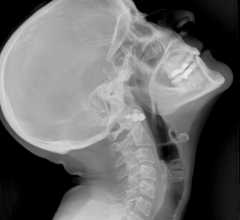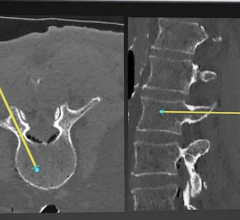August 10, 2016 —Kubtec is helping with with an anthropologic imaging study of dried fetal skulls. The company recently welcomed Gerald Conlogue, MHS, RT (R)(CT)(MR), emeritus professor and co-director of the Bioanthropology Research Institute at Quinnipiac University, to its facility. Professor Conlogue, a radiographer renowned for his work in forensic and anthropologic imaging, used the Kubtec Parameter 3‑D Tomosynthesis System to capture images of a dried fetal skull from the Shapiro/Robinson Collection at the Cushing Center at Yale. This unique collection features fetal skulls ranging from four to 40 weeks gestation.
In partnership with Kubtec, University College Dublin, Cranfield University (U.K.), UConn Dental School, Quinnipiac, and Yale, Conlogue will be capturing X-ray images of specimens of varying sizes and gestational stages from the collection with different imaging modalities. Along with the Parameter 3‑D Tomosynthesis System, this study will compare X-ray film in cassettes with intensifying screen, non-screen film, computed radiography (CR), direct digital radiography (DR), multi-detector computed tomography (MDCT), dental cone beam computed tomography, and microCT.
The goal of this project is to identify the modality which delivers optimum imaging results for specimens of varying sizes by comparing cost and image resolution for each modality. The findings will benefit radiographers in technical terms, as well as researchers who will be able to accurately predict their costs when creating research budgets and applications.
During this visit, Professor Conlogue, along with two international students from University College Dublin, brought “Skull 4” from the collection, a skull from a fetus at 30-36 week gestation. Skull 4 is the largest skull in the collection and was examined using both the 2‑D and 3‑D modalities of the Kubtec Parameter 3‑D System.
The Parameter 3-D Tomosynthesis System from Kubtec is the only system capable of providing 2‑D images, as well as 3‑D slices of their specimen. Slice by millimeter slice, the Parameter 3‑D System enabled Professor Conlogue’s team to instantly view the finest anatomical detail in Skull 4. Designed for multiple applications, including science and research, forensics, and non-destructive testing (NDT), Parameter 3‑D is the only system to offer 3‑D tomosynthesis imaging for forensic and anthropological studies.
At Kubtec, we’re looking forward to conducting more X-ray examinations on several more of the fetal skulls from the Shapiro/Robinson Collection as a research partner in Professor Conlogue’s project. The results of this project will be on display in the rotunda of the Yale Medical School Library from May 2017 until April 2017.
For more information: www.kubtec.com


 July 18, 2024
July 18, 2024 







